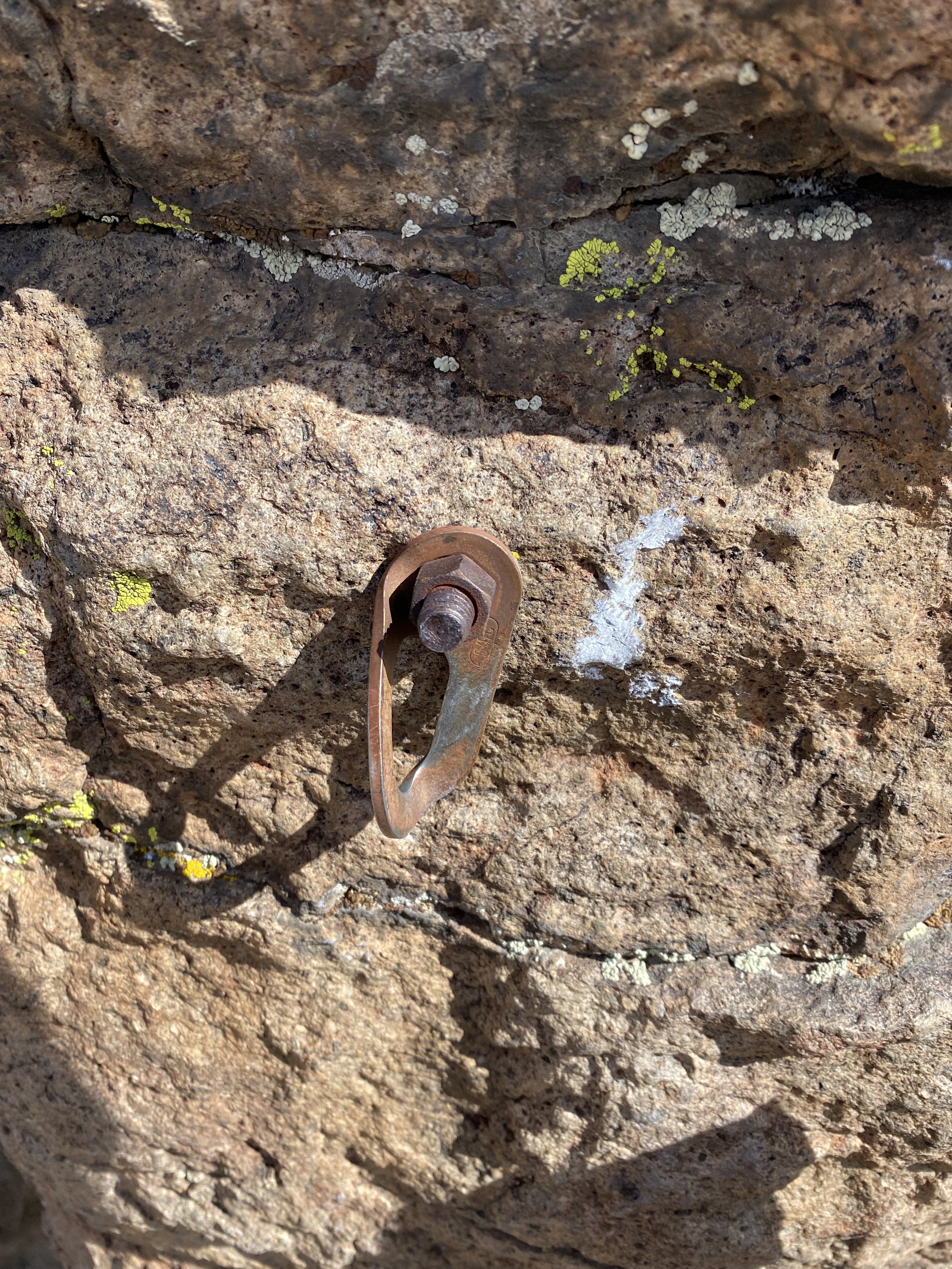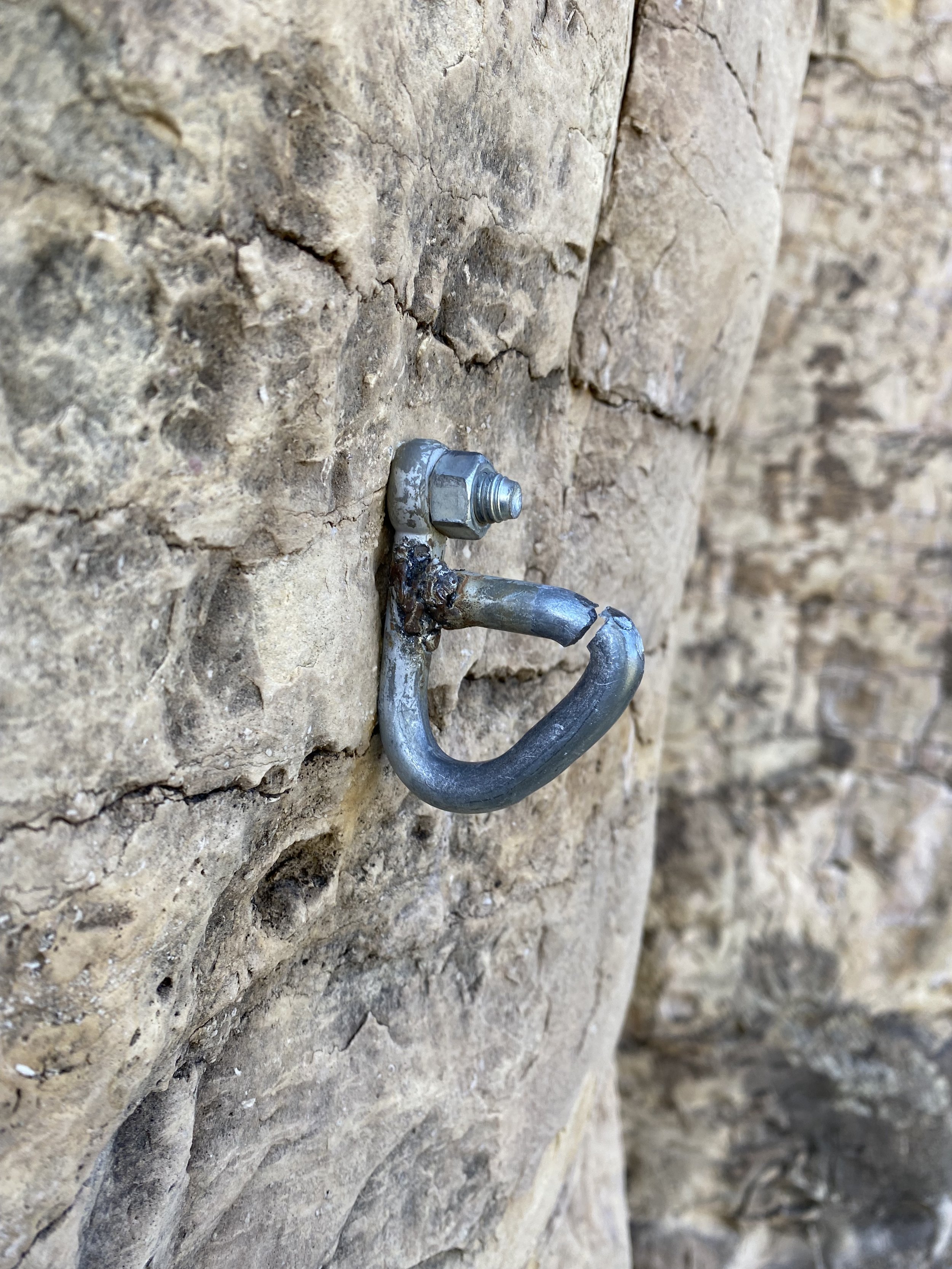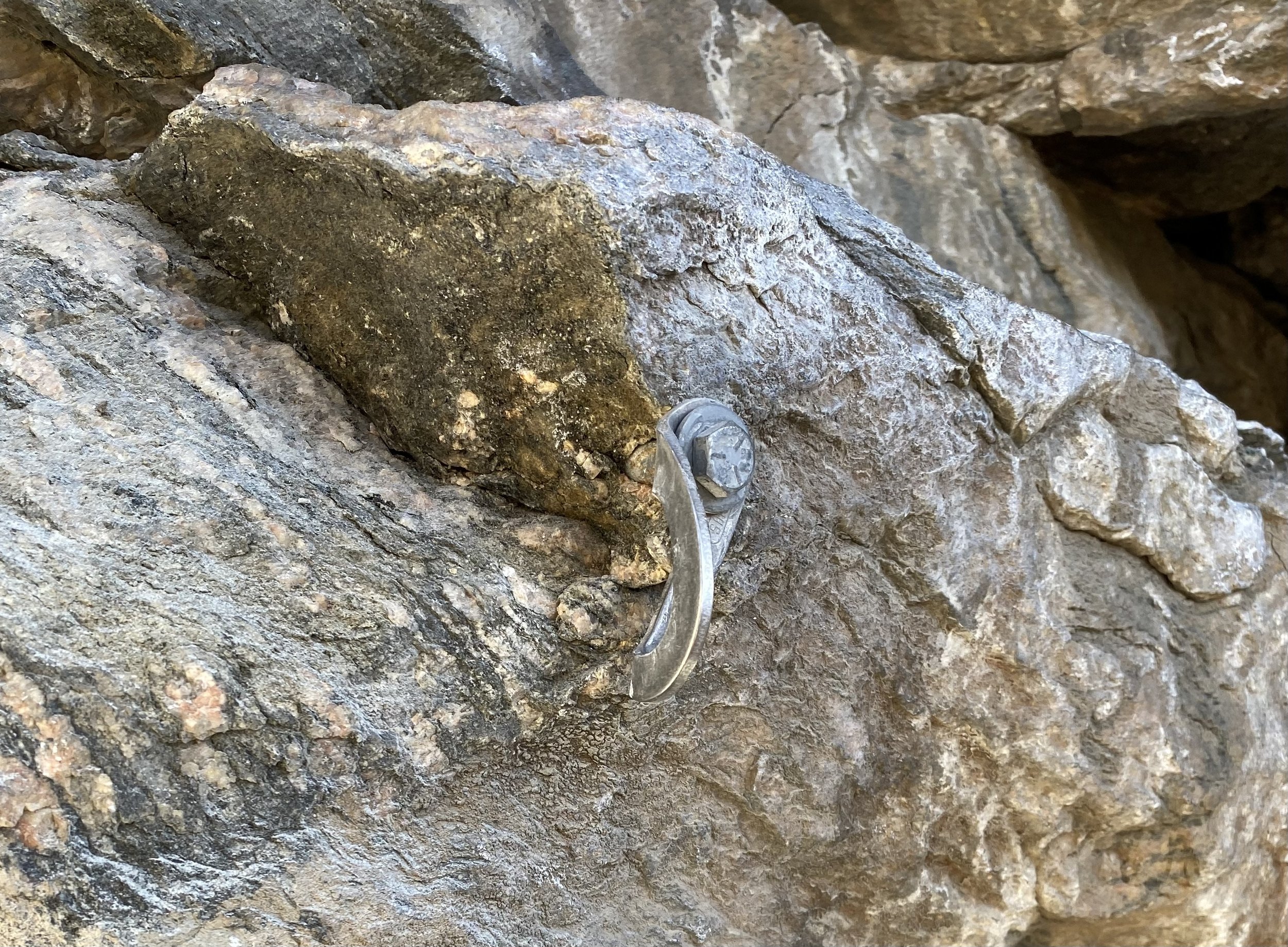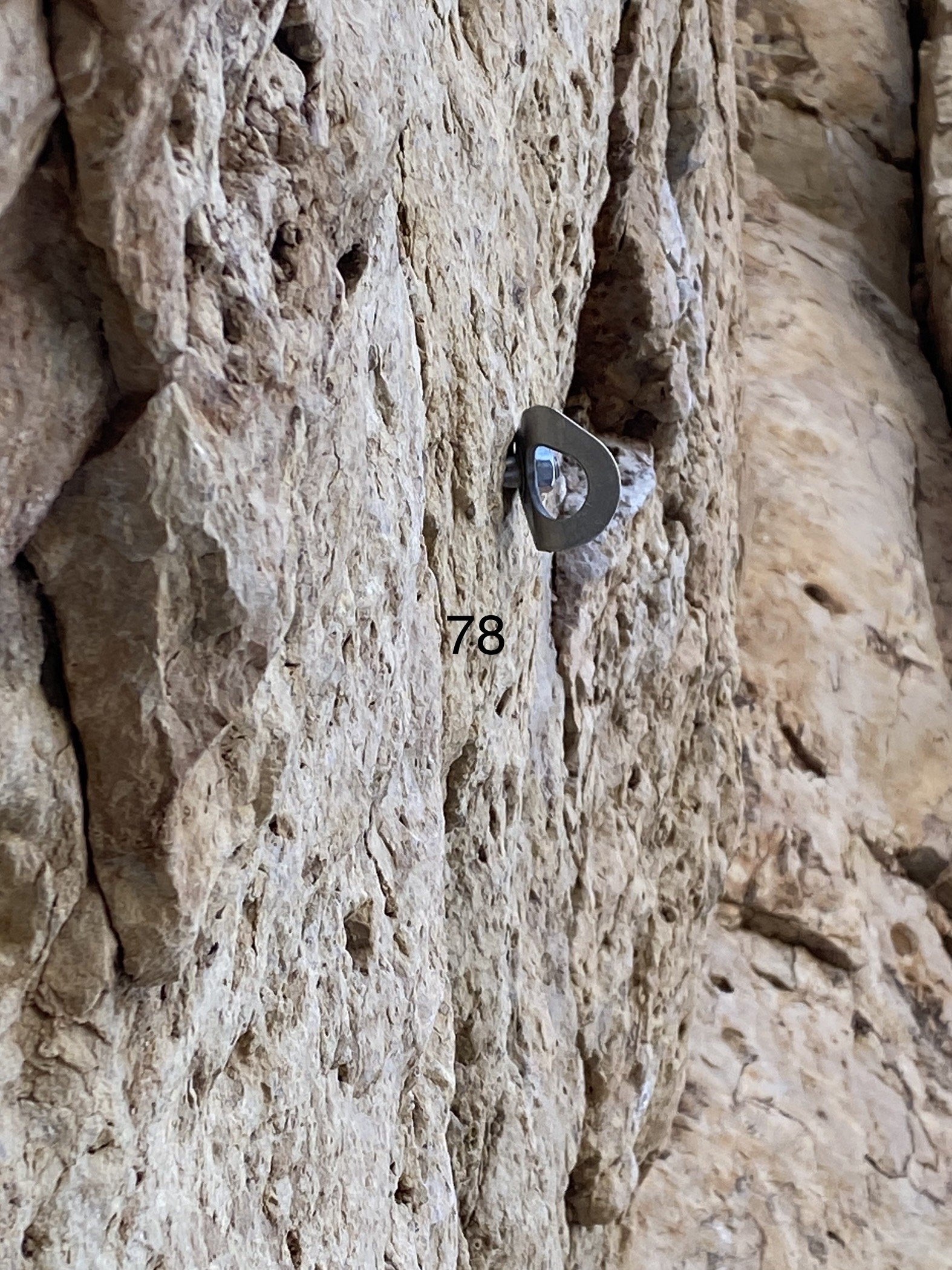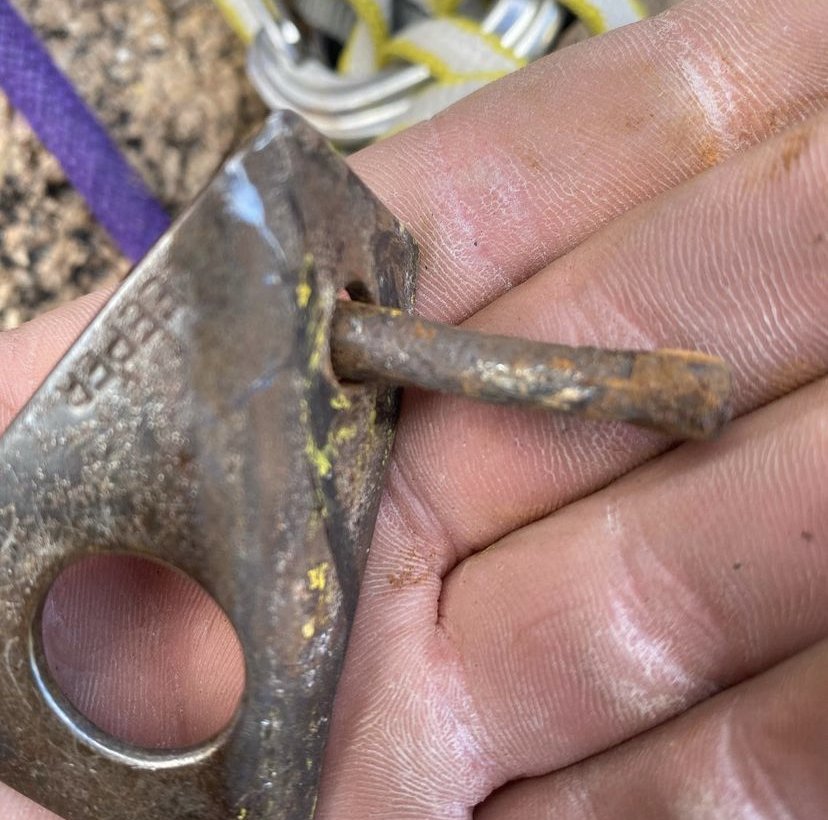Ever clip a bolt, move past it, and then wonder if it will really hold if you blow that next move? Playing it safe doesn’t hurt, and bolts shouldn’t be blindly trusted, but thankfully, even most of the spinners and crusty bolts are still strong. Most rusty bolts BCC replaces are still safe, and are replaced before rusting prevents removal, rather than because they are about to fail. That said, here are some suggestions on what to do if you spot a bad bolt, and some things to look out for.
The best ways to support replacement of old, bad, and unsafe hardware in the front range is donating to BCC’s Anchor Replacement Program (ARP), becoming a member, and volunteering with the ARP. We’ll even teach you the skills to be a rebolter! In addition, you can report bad and questionable bolts to BCC and one of our volunteers will get out to check it. Including pictures is always helpful.
Spinners: These are the most common “bad bolt” but thankfully tend to be more inconvenience than safety hazard. They can usually be remedied by gently snugging down the nut or bolt head either by hand, or with a short wrench. Snug is good enough if you don’t have a torque wrench or know the proper tightness.
Rust: As mentioned above, rust does not automatically indicate an unsafe bolt, especially if just on the metals surface. However, it is difficult to know if the bolt has been compromised, and they should be reported and replaced.
Homemade hangers and shuts: While many of these have been replaced, there are still routes with old or home-made hardware, such as cold shuts, or angle-iron “bedframe” hangers. Many of these are quite strong, but with inconsistent quality when new, and now being quite old, this hardware should be reported and replaced.
Homemade angle iron
Cold Shut.
Bolts near edges and fractures: These bolts deserve some skepticism even if newer. Over time, the outward pressure mechanical bolts exert can fracture the rock, as seen in this picture from Clear Creek. This bolt was near failure when replaced and was removed by hand without special tools.
Overly protruding bolts: These should also be reported and used with skepticism. This is often a sign of poor placement, inappropriate bolt type, or erosion of the hole. They likely do not have sufficient embedment, and may create a levering action on the bolt. This bolt from the South Platte was loose in its hole, and only about 1.5” into the rock. This newer bolt in Shelf Road was poorly placed and creates a levering action on the bolt shaft.
South Platte
Shelf Road
Buttonheads, Star Drive, and other old bolts: These are now quite rare, but may be encountered in backcountry areas, and less frequented crags. Any button head or start drive should be used with caution.
Button head
Star Drive
Power-Bolt+: These newer bolts were unfortunately inadequate from the time they were first installed. Introduced as a replacement to the very common 5-piece bolts (power bolt, sleeve bolt), the 3/8” version of these only has a 1/4” core and does not meet modern standards. These bolts appeared at several crags in the last several years and should be reported to be replaced. These are easy to identify as the head is stamped PB+. The larger 1/2" versions will need to be replaced eventually as they rust but are safe in the near term.

